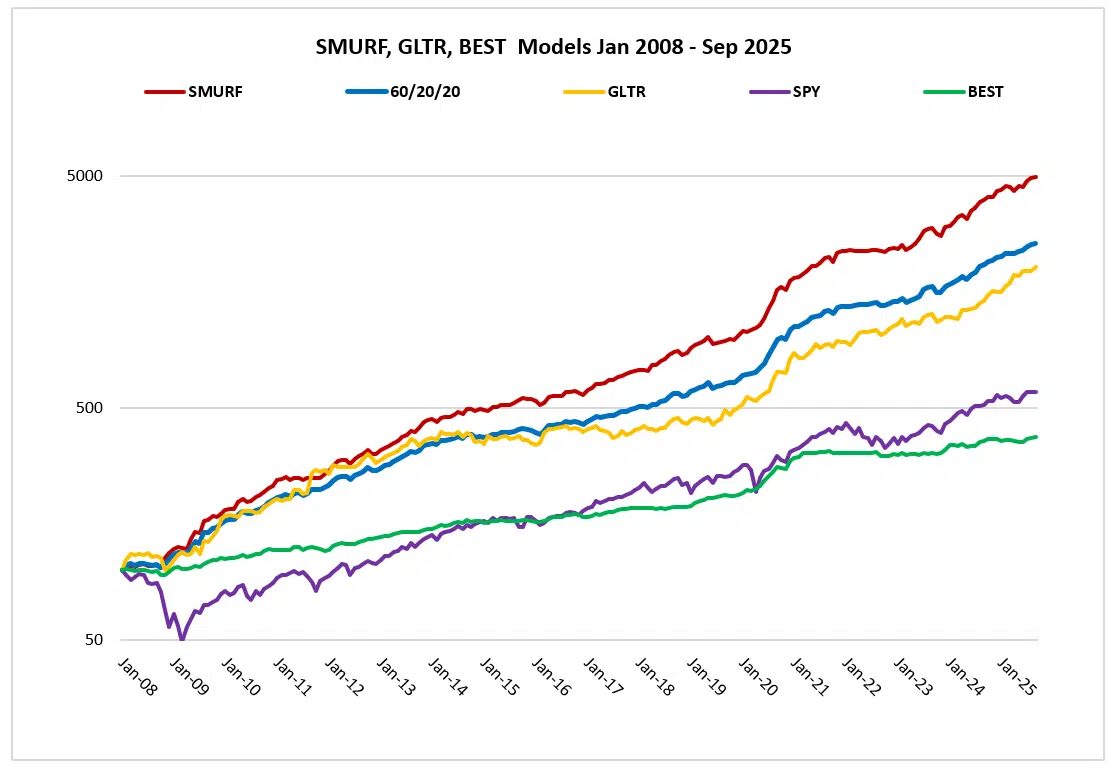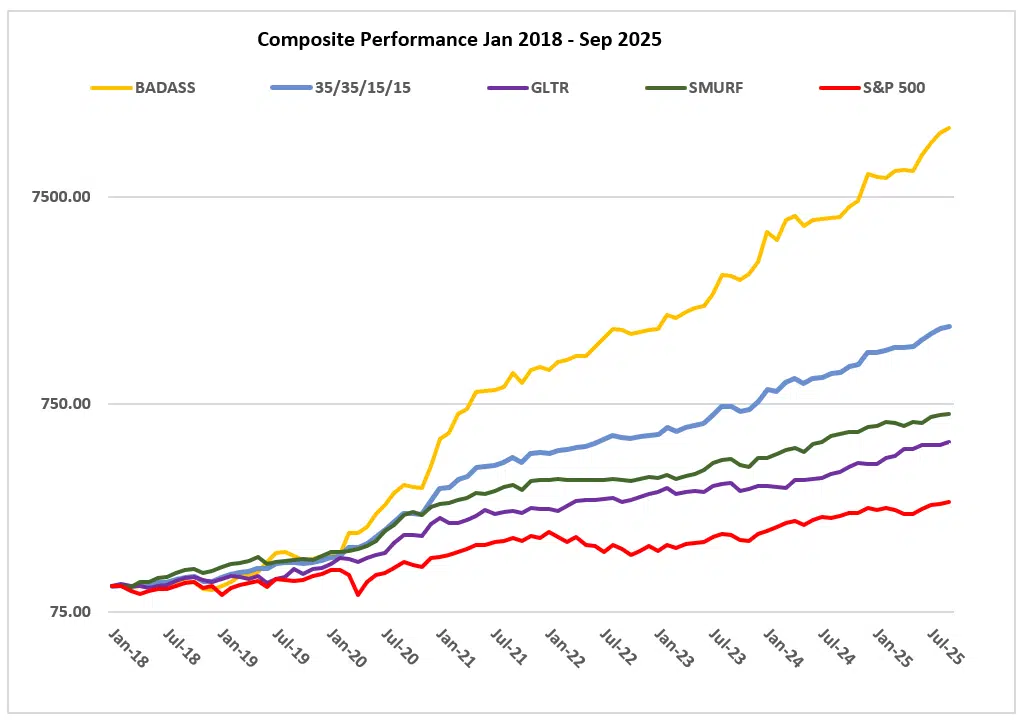We designed our public dual momentum model, GEM, to be simple and easy to use by do-it-yourself investors. GEM exists to help protect smaller investors from significant drawdowns while allowing them to earn returns that exceed the market over the long run.
But momentum works best when it incorporates multiple trend determinants. There is a synergistic effect when doing that.
Most investors do not give enough importance to price trends. Greyserman & Kaminsky show that simple trend following has outperformed buy-and-hold and reduced downside excursions back to the beginnings of many markets. No other investment factor has shown that.
Our models are the culmination of a lifetime of investment research and experience. Three of our four proprietary models use a channel breakout approach validated on 100 years of data as seen in our award-winning research study. We also insist on real world superior performance.
Richard Dennis taught something similar to this to his “turtle traders.” Jack Dreyfus became a billionaire using channel breakouts of stocks making new highs.
Most of our models incorporate mean reversion from overbought and oversold conditions as a complement to trend following.
Our proprietaey models use daily data and are highly adaptive to market conditions. They are based on rigorous, academic-quality research with validation on at least 100 years of data. This is the only way to be confident you haven’t overfit your data.
We spend considerable time on due diligence to find the best ETFs for our models and on portfolio construction. Thoughtful portfolio structuring is an essential part of our investing process. Doing so gives consistency, stability, and rebalancing profits.
Our models work in many different markets. We chose ones where their combinations create optimal balanced portfolios that are responsive to different market conditions. Multiple models with low to moderate correlations are the best way to reduce model estimation error and uncertainty. Optimal combinations of models can enhance expected returns and reduce downside exposure.
We license our proprietary model signals to substantial private and institutional investors, as well as to select investment advisors who understand and appreciate what we do.
Most trading models exit to a safe harbor asset when not in their risk-on positions. Our models are unique in that they switch to other assets or models with positive trends before seeking a safe harbor. This layering captures additional profits and helps reduce whipsaw losses. Our models also all use the principle of confirmation of model signals from other closely aligned assets. Here are our current proprietary models.
Stock Market Upside Reversal Factor (SMURF)
SMURF is a stock market oriented model that combines mean reversion with trend and short-term calendar anomalies. It buys mega-cap U.S. stock ETFs when their trends are positive. It also buys stock market ETFs for calendar anomaly and short-term mean reversion trades. SMURF exits when trends are no longer positive or on abnormal strength. When stock trends are not positive, SMURF holds the BEST model’s bond positions.
Blockchain and Digital Asset Synergistic System (BADASS)
BADASS applies our trend model mostly to the BLOK and BITQ ETFs, representing blockchain technology stocks. It also allocates a small amount to a spot Ethereum ETF when its trend is positive. BADASS has been our most profitable model.
Gold Long Trend (GLTR)
GLTR applies trend following to gold ETFs. Gold is often mean-reverting and challenging to trade, but our trend strategy handles it well. GLTR also incorporates short-term mean reversion and calendar anomalies. Even without trend following and mean reversion, gold has outperformed the S&P 500 over the past 25 years. GLTR has a low correlation to our other models and is therefore an excellent portfolio diversifier.
Bond Enhanced Systematic Trading (BEST)
BEST does internal layering. It holds intermediate corporate and convertible bond ETFs when their trends are positive. Otherwise, BEST holds shorter-term bond or Treasury bill equivalent ETFs.
Here are the results of our SMURF, BEAST, and GLTR models since 2008.


